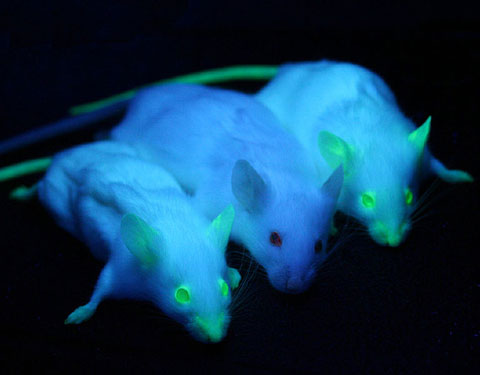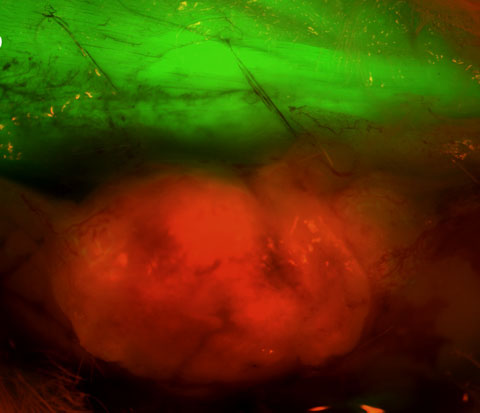Fluorescent Mice


Top: A trio of mice with two expressing the green fluorescent protein gene under ultraviolet light. Bottom: A red fluorescent protein indicates a tumor cell near host cells that have the green fluorescent protein.
Image Credit: I. Moen et al./BMC Cancer
April 22, 2013
In the mid-20th century, scientists first observed the green fluorescent protein — a protein that glows green under ultraviolet light. The protein, which was originally found in a bioluminescent jellyfish, has since been modified and mutated in the lab.
Biologists now use the protein as a biosensor, indicating when certain genes are being expressed in animals. In the top image, you can see two mice expressing the green fluorescent protein on either side of a mouse that doesn't express the protein. The fluorescent mice glow green around their eyes, nose, and tail under ultraviolet light.
In the bottom image, a tumor expressing a red fluorescent protein indicates the location of a cancerous tumor while the green fluorescent proteins are expressed in the host mouse's cells. Using biosensors, scientists can better understand how caner cells spread to new tissue. You can learn more about the research that produced these images in the team's PubMed research article.














